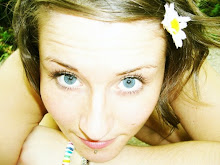


While Arnatt started off as a painter, he turned to conceptual photography in the late 1960s with work that often had a pokerfaced humour. "Notes from Jo" (1990 – 94) record his wife’s Post-It note messages usually left in their kitchen. The work irreverently plays on the conceptual concerns of image and text through the irritations and communications of daily life. "They were everyday notes from his wife, but when artist Keith Arnatt pictured and enlarged them after her death they were transformed," writes Martin Parr.
"It’s what you could call a more sentimental approach to that human condition stuff that we all face. But as always the interesting issue is how does it work? In this case finding the left over moments from a life just finished and representing them as photographs. This is technically art giving things ‘honorific’ value and it stems from the concept of ‘moments of epiphany’.
A moment of epiphany is a sudden manifestation or an intuitive grasp of reality through something usually simple or everyday."
The Guardian
Notes From My Wife is a case in point. They are jottings and reminders written by his wife, Jo, in the early 90s. Soon after, she was struck down by a brain tumour and Arnatt nursed her until her death in 1996. He decided to collect the most poignant of the notes and photographed 18 of them. Taken out of context and blown up, they become surreal. This was Arnatt's strength as a photographer: he understood how the smallest detail or observation could be transformed by the act of isolation.
All his series of photographs were taken within striking distance of his home near Tintern in Wales (including The Visitors, 1974-6, of tourists at Tintern Abbey) or, like the notes, actually in the house. He found pleasure in everyday objects - notably in exploring his local rubbish tip. He went on to make simple still lives of cardboard boxes, abandoned paint tins and other objects he found there.


Because I knew Keith and his wife these notes have a much greater poignancy for me than an outside observer. This issue, the private and the public face of practice is a key one. Do reflections on our own experiences automatically communicate to others, or do we have to mediate or shape these reflections in a way that universalises them?
ReplyDelete